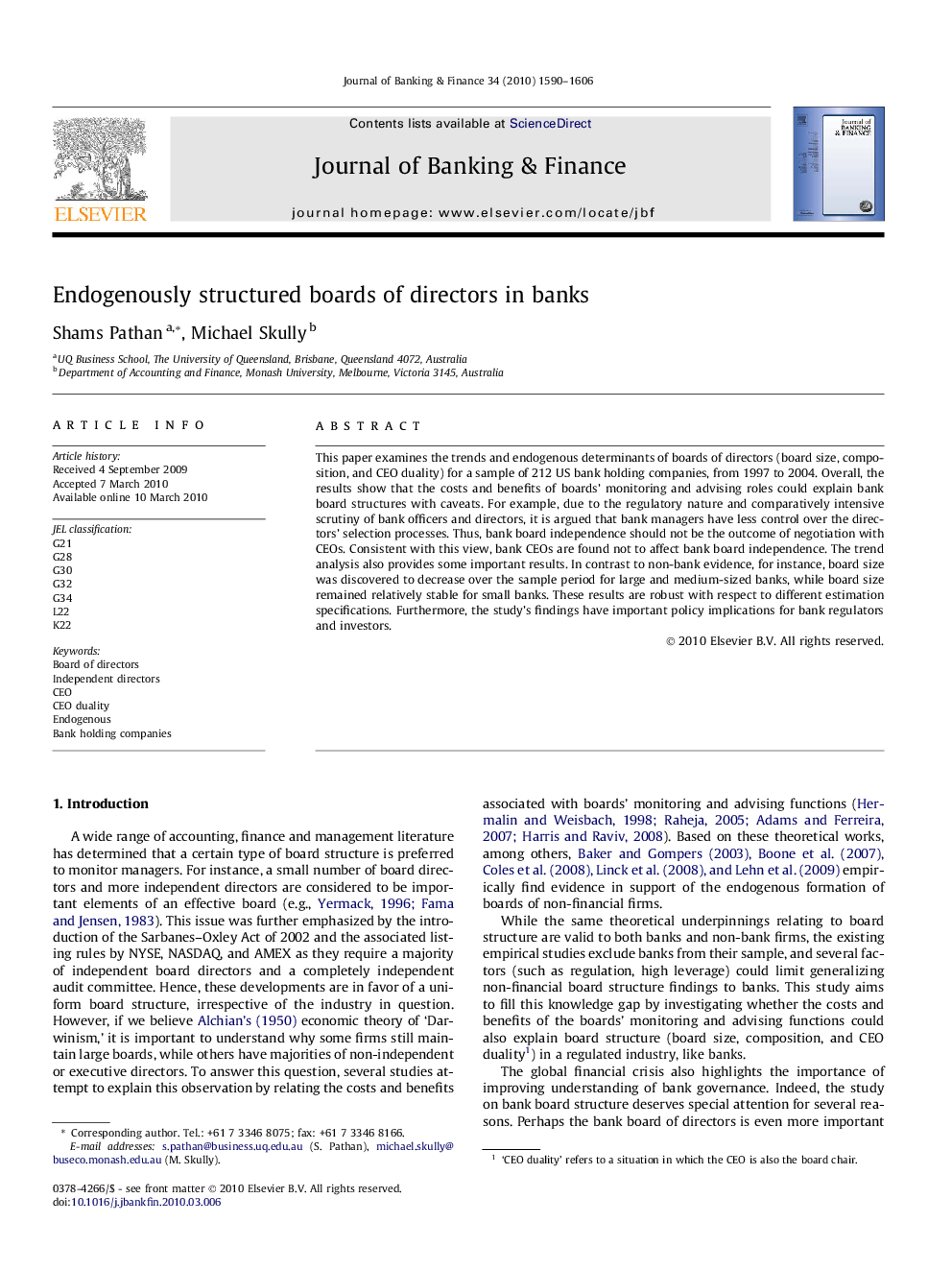| Article ID | Journal | Published Year | Pages | File Type |
|---|---|---|---|---|
| 5090798 | Journal of Banking & Finance | 2010 | 17 Pages |
This paper examines the trends and endogenous determinants of boards of directors (board size, composition, and CEO duality) for a sample of 212 US bank holding companies, from 1997 to 2004. Overall, the results show that the costs and benefits of boards' monitoring and advising roles could explain bank board structures with caveats. For example, due to the regulatory nature and comparatively intensive scrutiny of bank officers and directors, it is argued that bank managers have less control over the directors' selection processes. Thus, bank board independence should not be the outcome of negotiation with CEOs. Consistent with this view, bank CEOs are found not to affect bank board independence. The trend analysis also provides some important results. In contrast to non-bank evidence, for instance, board size was discovered to decrease over the sample period for large and medium-sized banks, while board size remained relatively stable for small banks. These results are robust with respect to different estimation specifications. Furthermore, the study's findings have important policy implications for bank regulators and investors.
